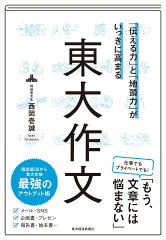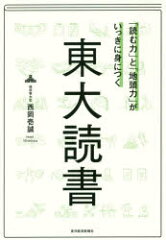
<prologue>
I started a blog called “The Baby Boomer Generation’s Miscellaneous Blog”(Dankai-sedai no garakutatyou:団塊世代の我楽多(がらくた)帳) in July 2018, about a year before I fully retired. More than six years have passed since then, and the number of articles has increased considerably.
So, in order to make them accessible to people who don’t understand Japanese, I decided to translate my past articles into English and publish them.
It may sound a bit exaggerated, but I would like to make this my life’s work.
It should be noted that haiku and waka (Japanese short fixed form poems) are quite difficult to translate into English, so some parts are written in Japanese.
If you are interested in haiku or waka and would like to know more, please read introductory or specialized books on haiku or waka written in English.
I also write many articles about the Japanese language. I would be happy if these inspire more people to want to learn Japanese.
my blog’s URL:団塊世代の我楽多(がらくた)帳 | 団塊世代が雑学や面白い話を発信しています
my X’s URL:団塊世代の我楽多帳(@historia49)さん / X
High school and university entrance examinations with recommendations have been around for some time, and recently more and more national universities have begun to introduce them. The University of Tokyo also introduced it in the 2016 academic year. There seems to be a lot of interest in this system since there was a possibility that Prince Hisahito of the Akishino family would take the exam.
Ms. Hikaru Suzuki, who is currently very popular on “The King of Tokyo Quiz” and “Prevato,” is also a member of the group that passed the “University of Tokyo Law School Recommendation Entrance Examination. Incidentally, she is a graduate of a junior high school and high school attached to the University of Tsukuba.
1.Miraculously passed Tokyo University from a deviation of 35
According to a June 8 article in Toyo Keizai Online, the key to success for Mr. Issei Nishioka, who miraculously passed the entrance exam to the University of Tokyo from a 35 deviation score, was to acquire the “power of explanation” and “power of summary.
Based on his own experience of passing the entrance exam, Nishioka has written a book titled “Todai Sakubun: How to Improve Your Ability to Communicate and Your Brain Power at a Glance” that describes how to write sentences that anyone can understand and that also make you smarter.
When I did not know much about the University of Tokyo’s entrance examinations with recommendations, I thought that only people with outstanding achievements or accomplishments, such as “Math Olympiad winners,” would be accepted, but it seems that not all people are like that.
Basically, the applicant must have a strong interest and a high level of knowledge and ability in the academic field of the department to which he/she is applying. As proof of this, you are required to submit an extremely high record of achievements and accomplishments.
The Faculty of Economics, the Faculty of Liberal Arts, and the Faculty of Science, for example, require submission of winning results in various contests such as the Science Olympiad.
In the School of Law, examples include a certificate of commendation for community service activities and a newspaper article reporting on it; in the School of Education, examples include winning awards in national competitions and contests and presenting at high school student sessions at academic conferences; and in the School of Science, examples include product-level software development experience and publishing papers in scientific journals.
However, according to Professor Junko Hamanaka of the University of Tokyo’s Center for Research and Development of High School-University Connections, not only students with “idealistic and outstanding achievements and results in both name and reality” are admitted, but also “students who studied multiple languages in high school and have already learned about 40 languages,” “students who immersed themselves in toilet research,” “students who built a biotope at home when they were in elementary school,” and other students with rich personalities. Students who have created a biotope at home when they were in elementary school,” etc., are said to be students with rich individuality.
2.Entrance Examination for University of Tokyo Recommendation
(1) The Image of Students Sought by the University of Tokyo
The University of Tokyo Admission Policy states the following about the type of students the University of Tokyo seeks.
The University of Tokyo welcomes students who are not only concerned about their entrance exam scores, but who are also seriously interested in learning about a wide range of topics, both inside and outside of the classroom, using their own interests to gain a broad perspective that relates to various issues that they may encounter in the process, or deep insight to delve into their own problem consciousness and pursue their own research.
(2) Outline of Entrance Examination with Recommendation
Starting with the 2016 entrance examination, the University of Tokyo has abolished the second semester of the general entrance examination and has introduced an entrance examination with recommendations.
According to the “Application Guidelines,” the University of Tokyo places emphasis on “problem-finding,” “problem-setting,” and “communication skills.” Applicants are selected not only based on academic ability, but also on essays, group discussions, individual interviews, and so on.
The total number of applicants for all faculties is approximately 100. This number is the same as the number of applicants for the second semester.
Pass/fail decisions are based on a comprehensive evaluation of submitted documents, materials, interviews, etc., as well as the results of the “National Center Test for University Admissions”.
Each faculty has its own “image of students it seeks,” so some faculties have a very targeted approach to recruiting.
The School of Medicine states, “In order to promote medical research that contributes to the elucidation of the mechanisms of life phenomena, the conquest of disease, and the promotion of health, we have positioned the Recommended Entrance Examination as a quota for training medical researchers and will use it to foster international researchers who will conduct cutting-edge medical and life science research.
(3) Steps to take the entrance examination
① July: Application guidelines are announced on the University of Tokyo’s website.
② Mid-October: Online application registration
③ Early November: Applications accepted (essays, etc. for each subject to be submitted)
④ Early December: Announcement of results of the first round (document screening)
⑤ Mid-December: Second round of selection (interviews, group discussions, etc.)
⑥ Mid-January: National Center Test for University Entrance Examinations (applicants must score approximately 80% or more)
⑦Early February: Announcement of final successful applicants
(4) Examination Criteria and Pass Level
Applicants are required to have a score of approximately 80% or higher on the National Center Test for University Admissions as a basic academic ability.
Applicants must also have a strong background in an activity or area of specialty that they were involved in during their high school years.
In addition, applicants are required to have a high level of “problem-solving ability,” “problem-setting ability,” and “communication skills.
3.What is Entrance Examination with Recommendation?
(1) Purpose
There has been much criticism of the university entrance examination system, which determines admission based solely on a single paper test. The “Entrance Examination with Recommendation” was introduced as an alternative method of admission selection. This has been used for quite some time by private universities that want to secure excellent applicants as soon as possible.
Private universities can only accept up to half of their applicants through the “Entrance Examination with Recommendation” (there is no limit for the “AO Entrance Examination”). National universities can accept up to half of the total number of applicants through the combined “Entrance Examination for Recommendation and AO Entrance Examination”.
However, there is not a little criticism that recommendation-based entrance examinations “distort the fairness of entrance examinations.
In some cases, the majority of students admitted to some private universities are those who passed the “recommendation and AO” entrance examinations, which do not require academic achievement tests, causing the problem of “declining academic ability of university students.
(2) Merits and Demerits
In the narrow sense of the term, “Entrance Examination with Recommendation” is one in which a university decides whether or not to admit an applicant based on a “Letter of Recommendation” submitted by the high school. In contrast, “AO entrance examinations” require applicants to write essays and undergo lengthy interviews in order to evaluate their abilities.
The “recommendation entrance exam” for national universities such as the University of Tokyo is this “AO entrance exam.
(3) Need for verification of effectiveness and problems
In the case of private universities, entrance examinations with recommendations are conducted due to the “family affairs” of the management of each university. I think it is necessary to verify the effectiveness and problems of the “Entrance Examination with Recommendation” at National University of Japan.
In terms of effectiveness, we would have no complaints if a scholar comes out with a Nobel Prize-worthy invention or discovery, but as for students in the humanities, the results will vary depending on the perspective from which they are evaluated, and we can only hope for verification of effectiveness over a 10-20 year period.
It can be said that this recommendation examination is a test of the “discernment” and “fairness” of the University of Tokyo professors who select the applicants.

「伝える力」と「地頭力」がいっきに高まる 東大作文 [ 西岡 壱誠 ]
